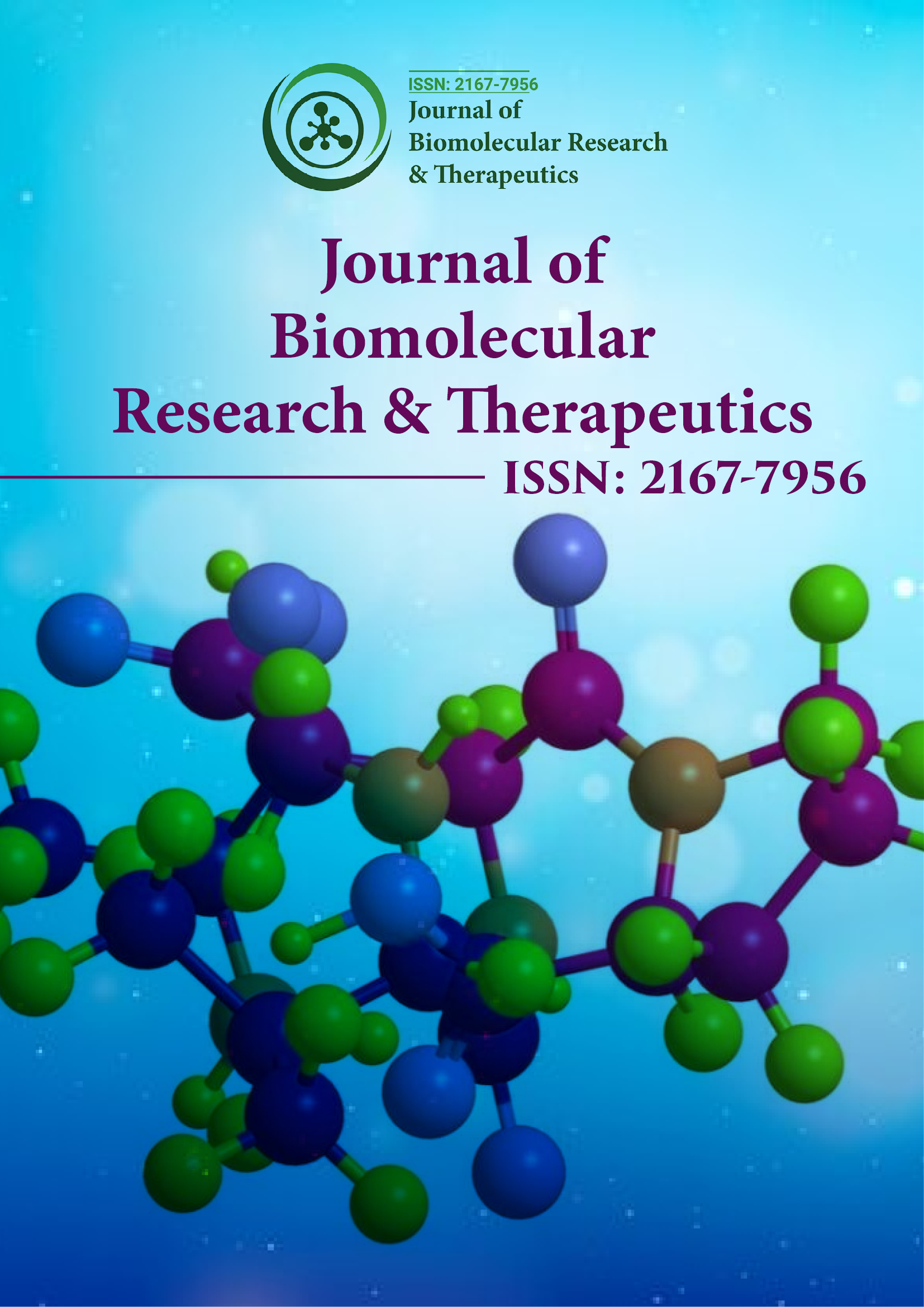Indexed In
- Open J Gate
- Genamics JournalSeek
- ResearchBible
- Electronic Journals Library
- RefSeek
- Hamdard University
- EBSCO A-Z
- OCLC- WorldCat
- SWB online catalog
- Virtual Library of Biology (vifabio)
- Publons
- Euro Pub
- Google Scholar
Useful Links
Share This Page
Journal Flyer

Open Access Journals
- Agri and Aquaculture
- Biochemistry
- Bioinformatics & Systems Biology
- Business & Management
- Chemistry
- Clinical Sciences
- Engineering
- Food & Nutrition
- General Science
- Genetics & Molecular Biology
- Immunology & Microbiology
- Medical Sciences
- Neuroscience & Psychology
- Nursing & Health Care
- Pharmaceutical Sciences
Commentary - (2025) Volume 14, Issue 3
Therapeutic Potential of Exosomes in Regenerative Medicine
Emily Carter*Received: 28-May-2025, Manuscript No. BOM-25-29608; Editor assigned: 31-May-2025, Pre QC No. BOM-25-29608; Reviewed: 14-Jun-2025, QC No. BOM-25-29608; Revised: 20-Jun-2025, Manuscript No. BOM-25-29608; Published: 28-Jun-2025, DOI: 10.35248//2167-7956.25.22.440
Description
Exosomes, as natural carriers of bioactive molecules, offer immense promise in advancing therapeutic strategies across multiple medical fields. Their inherent ability to interact with recipient cells and mediate intercellular communication has garnered substantial attention, particularly in the context of drug delivery, immune modulation and regenerative medicine. What makes exosomes particularly compelling is their biological compatibility, as they are derived from the same cellular systems that they aim to affect, which reduces the risk of immune rejection and enhances their therapeutic potential. One of the most exciting applications of exosomes lies in cancer therapy. Tumor-derived exosomes carry oncogenic proteins, microRNAs and other factors that contribute to the tumor microenvironment and promote metastasis. On the flip side, exosomes can be engineered to carry therapeutic agents that specifically target tumor cells. By encapsulating anticancer drugs, RNA-based therapies like siRNA or mRNA, or even immune-modulating agents, exosomes can serve as highly effective delivery vehicles, minimizing off-target effects and improving the specificity of cancer treatments. Furthermore, exosomes can be designed to carry immunomodulatory factors to stimulate the body’s immune response against the tumor, making them a promising candidate for cancer immunotherapy.
Exosome-based therapies also hold considerable potential in gene therapy. Since exosomes are capable of encapsulating nucleic acids, they can be engineered to deliver therapeutic genes directly to target cells. For example, exosomes have been explored for delivering CRISPR/Cas9 systems to correct genetic defects at the DNA level. Their ability to cross cellular barriers such as the Blood-Brain Barrier (BBB) makes them particularly appealing for treating neurological disorders, where other gene delivery systems often face significant challenges. Research is currently focused on enhancing the loading capacity and targeting specificity of exosomes for gene therapy applications.
Another significant area of interest is autoimmune diseases. Exosomes have been shown to modulate the immune system and their ability to carry regulatory molecules such as microRNAs or proteins capable of suppressing immune responses opens new avenues for treating autoimmune disorders like rheumatoid arthritis, multiple sclerosis and lupus. By utilizing exosomes as delivery vehicles for anti-inflammatory cytokines or immune-regulatory molecules, researchers hope to develop therapies that can precisely modulate immune responses without the broad immunosuppressive effects seen with conventional drugs.
The therapeutic potential of exosomes in tissue engineering and organ regeneration is also expanding. For instance, exosomes have been shown to promote the differentiation of stem cells into specific cell types, such as endothelial or cardiomyocyte cells, providing a natural means of supporting tissue regeneration. This is particularly relevant in the treatment of heart disease, where exosomes derived from stem cells or induced Pluripotent Stem Cells (iPSCs) can enhance cardiac repair after infarction. Similarly, in liver disease, exosomes have been used to deliver regenerative signals to damaged liver tissues, offering a non-invasive and highly effective strategy for liver regeneration. Despite the growing interest in exosome-based therapies, there remain challenges in their clinical application. The isolation and purification of exosomes in large quantities, particularly from primary cell cultures or patient-derived samples, is a bottleneck in their therapeutic use. Standardization of exosome isolation methods, characterization of their cargo and large-scale manufacturing processes are essential to ensure consistency and reproducibility for clinical applications. Furthermore, understanding the pharmacokinetics and biodistribution of exosomes within the body remains a critical issue. Although exosomes are capable of evading immune clearance, there is still much to learn about how they circulate in the bloodstream, how long they persist and their eventual clearance mechanisms.
In addition to these technical challenges, the regulatory approval process for exosome-based therapies will require rigorous testing to evaluate their safety and efficacy in humans. Researchers and companies developing exosome-based treatments will need to demonstrate not only the therapeutic benefit but also the long-term safety profile of these therapies to satisfy regulatory agencies such as the FDA and EMA. Despite these hurdles, the potential of exosomes as therapeutic agents is undeniable. Their ability to mediate natural cellular communication, deliver cargo specifically to targeted tissues and offer novel mechanisms of action presents new opportunities for treating diseases that are otherwise difficult to manage with conventional therapies. Continued research into the engineering, production and application of exosomes holds the potential to usher in a new era of cell-based and targeted therapies. The next decade will likely see exosomes playing a central role in the development of personalized medicine, where treatments are tailored to the unique biological makeup of individual patients. In conclusion, exosome-based therapeutics are on the brink of revolutionizing several areas of medicine, from cancer treatment to neurological disorders and tissue regeneration. While challenges remain in overcoming technical and regulatory barriers, their extraordinary potential to deliver biologically active cargo, facilitate cellular communication and promote regeneration makes them a promising candidate for the next generation of therapeutic interventions.
Citation: Carter E (2025). Therapeutic Potential of Exosomes in Regenerative Medicine. 14.440
Copyright: © 2025 Carter E. This is an open access article distributed under the terms of the Creative Commons Attribution License, which permits unrestricted use, distribution and reproduction in any medium, provided the original author and source are credited

